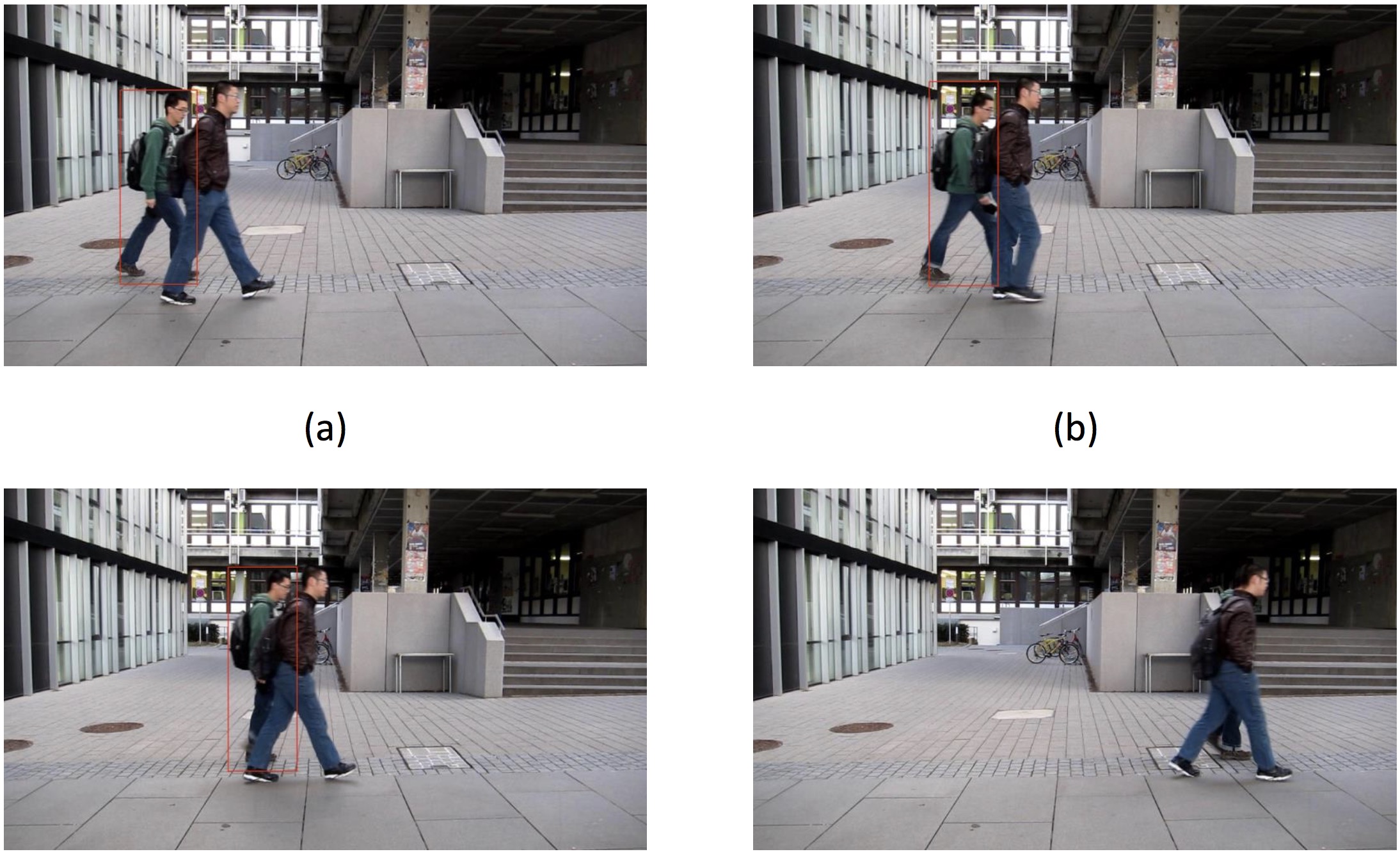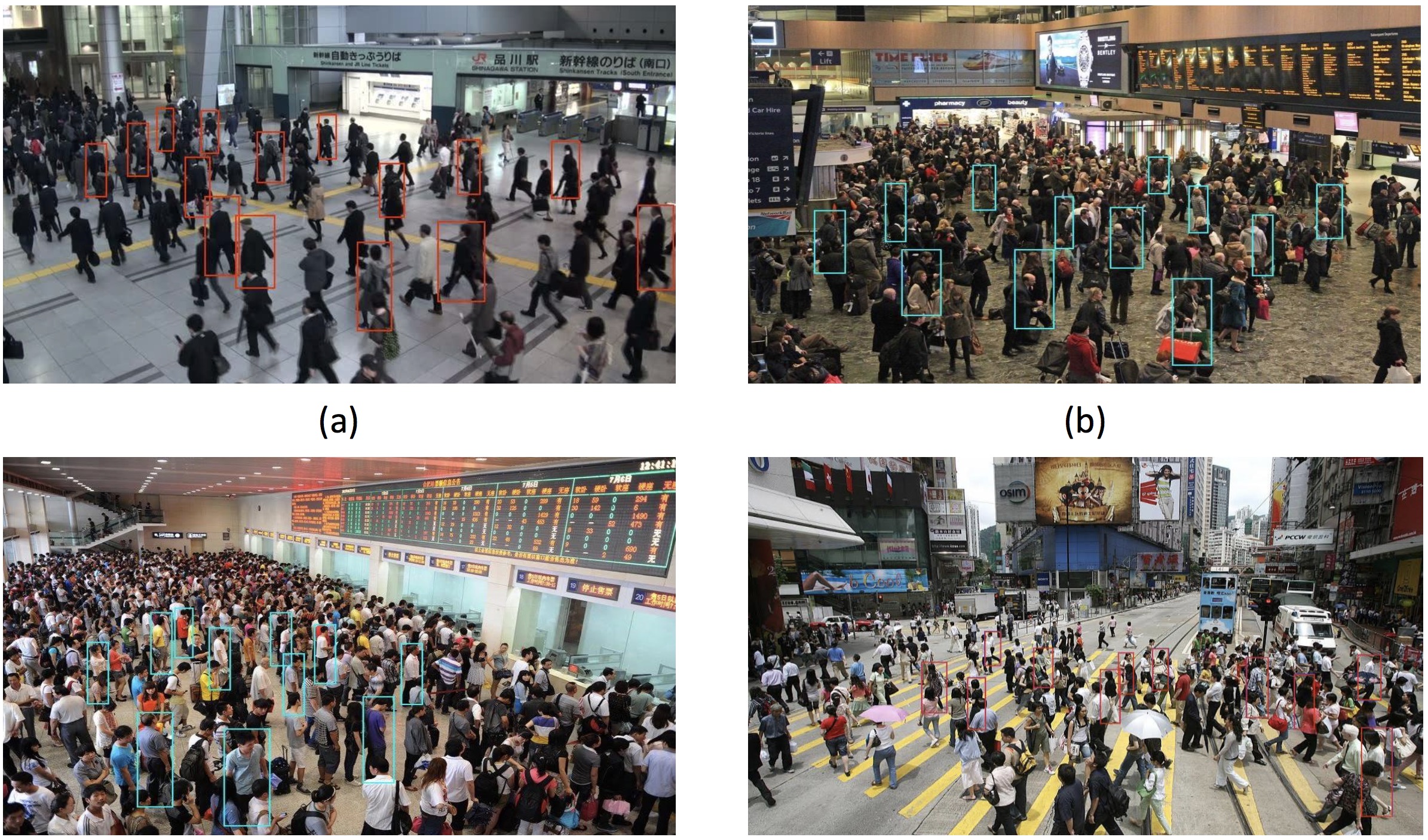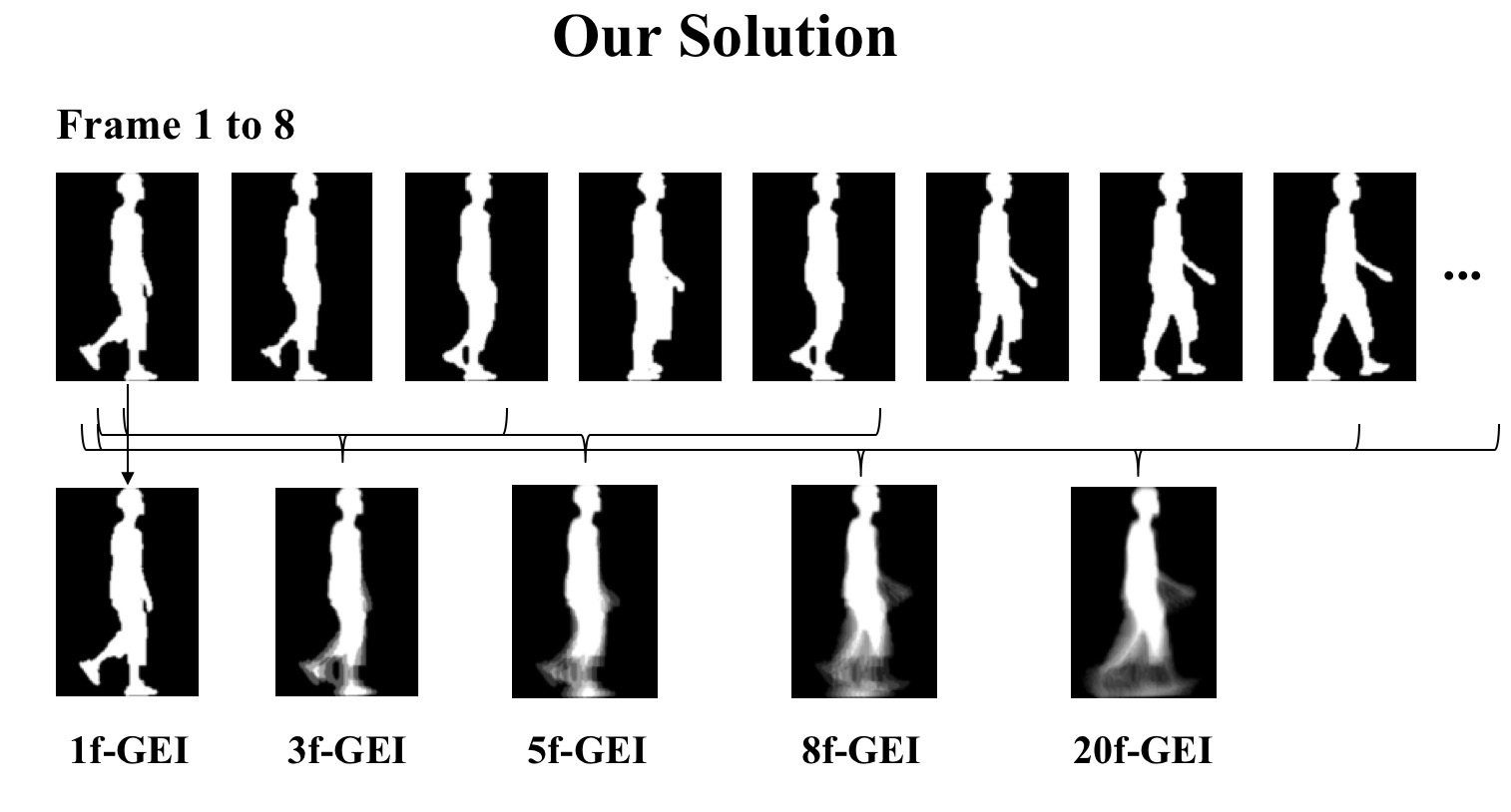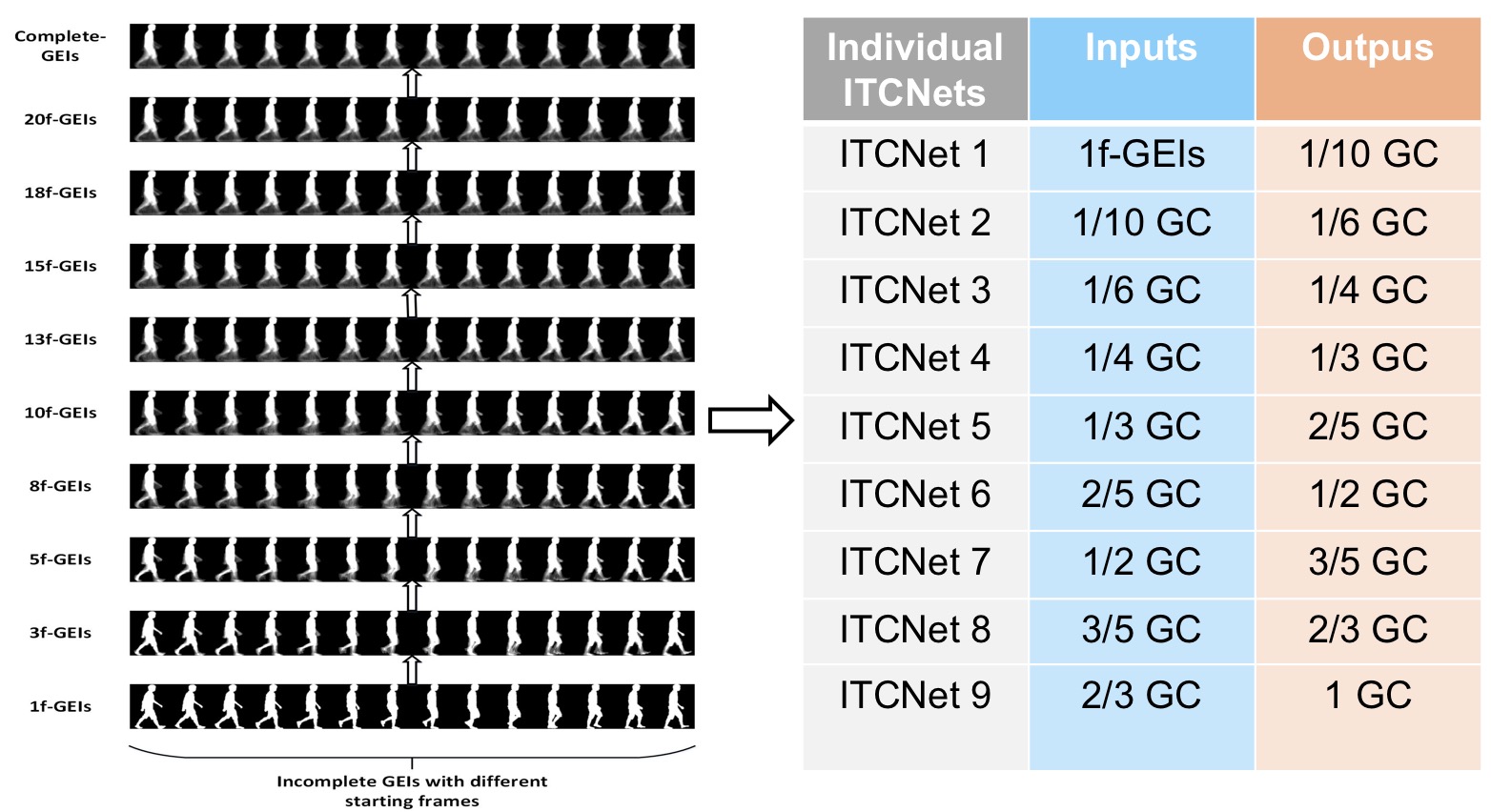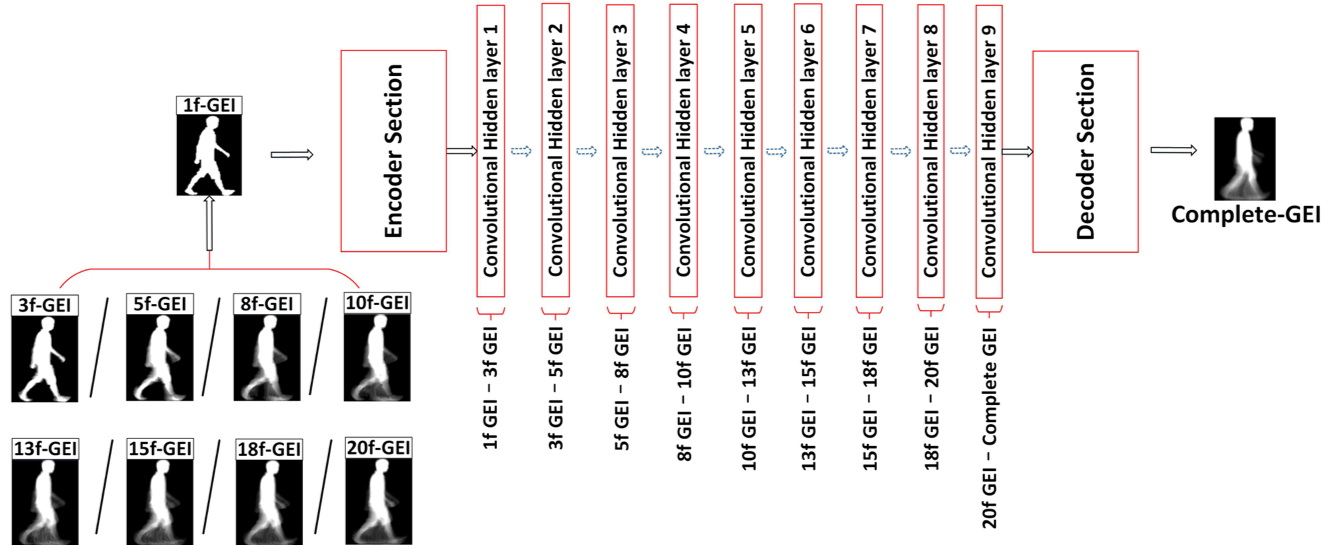Paper: 2018 IEEE International Conference on Image Processing (ICIP) „GAIT RECOGNITION FROM INCOMPLETE GAIT CYCLE“
This repository includes part of the codes from my above paper, as the demand of my spuervisor, I will clear up the codes after the conference.
The Gait Energy Image (GEI) could reflect specific individual’s gait features, using GEI to represent human’s gait features has been a common method for gait recognition. But in some circumstances, the GEI of complete gait cycle is not available, e.g., when the person is walking through a multi-crowd environment or behind some shelters:
In these cases, only a few frames’ gait silhouettes could be extracted to generate the in- complete GEI, which leads to an extremely lower gait recognition rate. This case is not a special case, but can be seen everywhere in railway station, airport and street:
Gait Energy Image (GEI) is one kind of gait featur representation, it has been proven to be one of the most simple gait representation and has the best recognition ability:
We want to build a network, which can transform different kind of incomplete GEI, whether it's composed of 1 frames or 10 frames of Gait silhouettes or different start frame, direct to complete GEI, whcih has almost one kind of shape for each subject:
As you can see from this figure, different incomplete GEIs composed of differen number of frames of start frames has various shapes, standing or walking, so it's hard to directly transform them to complete GEI, so we first train many network to achieve a small range transformation, we call it ITCNet, which means Incomplete to Complete Transformation Network, GC means gait cycle, 1/10 GC meams by 1/10 gait cycle composed GEI:
Here is the final structure of ITCNet, for more details please refer to my paper “Person Identification form Partial Gait Cycle Using Fully Convolutional Neural Network”, but it still been processed these days by NeuroComputing periodical:
Here is the total workflow of my master thesis:
These instructions will get you a copy of the project up and running on your local machine for development and testing purposes. See deployment for notes on how to deploy the project on a live system.
What things you need to install the software
install anaconda on your computer
A step by step series of examples that tell you have to get a development env running
For windows:
open cmd
For mac os/ linux:
open terminal
cd to the path that the tensorflow.yml file exist
#For other person to use the environment, first use this to activate the tensorflow.yml:
conda env create -f tensorflow.yml
for windows: activate tensorflow
for linux: source activate tensorflow
jupyter notebook
In checkpoints_view_invariant saved all trained models, if you want to test with these models just open any ITCNet.ipynb file, there is a Test Model section in the end of it. Because the data is too big, I can't upload them to dropbox. The function save_decoded could save the predicted result to any path. The function get_batches could split the test data into batches, so you can input any data you want to test to get_batches.

